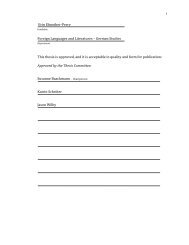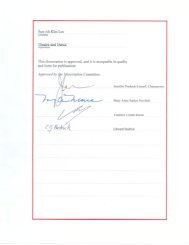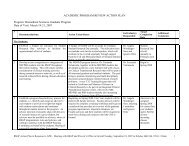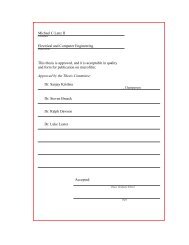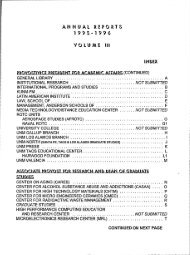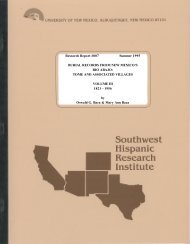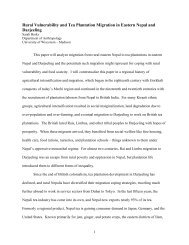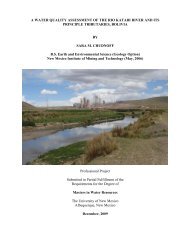Selective Salt Recovery from Reverse Osmosis Brine - University of ...
Selective Salt Recovery from Reverse Osmosis Brine - University of ...
Selective Salt Recovery from Reverse Osmosis Brine - University of ...
You also want an ePaper? Increase the reach of your titles
YUMPU automatically turns print PDFs into web optimized ePapers that Google loves.
CHAPTER 1<br />
1.1 INTRODUCTION<br />
Across the United States and the world, the issue <strong>of</strong> water scarcity is gaining<br />
importance as communities struggle to provide water to their constituents. The <strong>Reverse</strong><br />
<strong>Osmosis</strong> (RO) treatment process removes dissolved salts <strong>from</strong> water, producing drinking<br />
water <strong>from</strong> sources that cannot be treated conventionally. However, it is more wasteful<br />
than conventional treatment and can only recover 50 % to 75% <strong>of</strong> the water diverted to<br />
the treatment process. RO concentrate, as the waste volume is called, is difficult to treat<br />
or dispose <strong>of</strong> because it contains high concentrations <strong>of</strong> dissolved salts. The National<br />
Research Council identified concentrate management as an area in which significant<br />
research is needed [1]. As water demand increases for limited water resources, RO<br />
treatment will become more widespread, especially in arid areas where water resources<br />
are already scarce.<br />
Regulatory and economic constraints to traditional concentrate disposal methods<br />
are driving research on alternate concentrate management strategies. This dissertation<br />
describes development <strong>of</strong> a treatment process for RO concentrate to recover salts for<br />
beneficial reuse and increase water recovery.<br />
1.11 Background<br />
The principle behind the RO process is that salt water and fresh water are<br />
separated by a membrane that is more permeable to water than it is to salts. In a nonpressurized<br />
system, fresh water would diffuse into the salt water solution. In the RO<br />
process, pressure is applied to the salt water side <strong>of</strong> the membrane, overcoming the<br />
osmotic pressure and forcing water through the membrane to the fresh water side. As a<br />
result, the salt water becomes saltier and fresh water is recovered.<br />
There are two main limitations to the RO process that limit recovery. First, as the<br />
salt concentration in the RO feed water increases, more pressure is required to push fresh<br />
water through the membrane. A mechanical limit exists at approximately 1200psi above<br />
which the pressure differential will damage the membrane. This limit is significant in<br />
1




